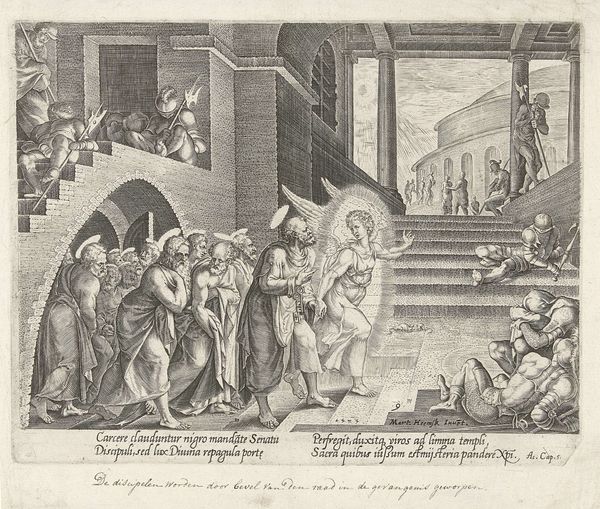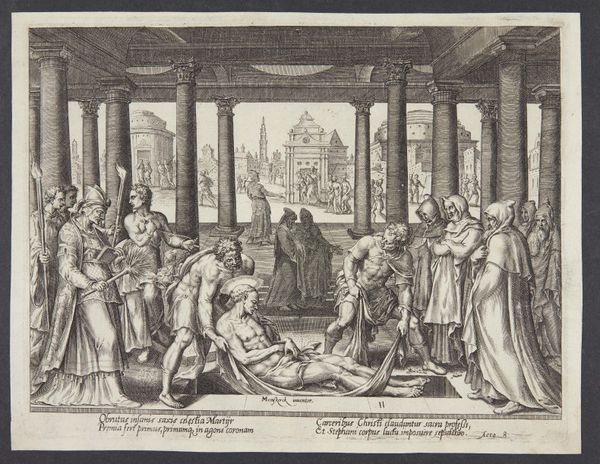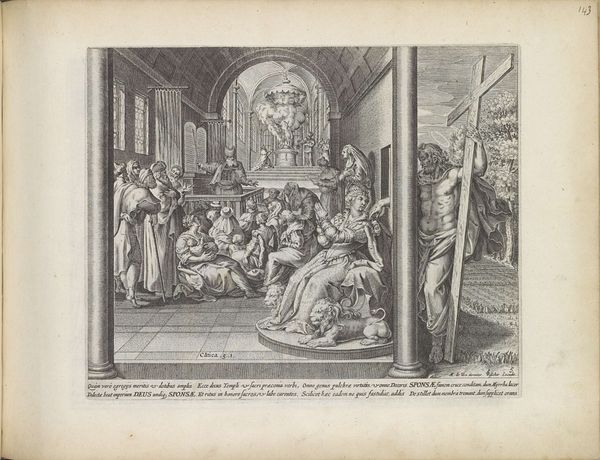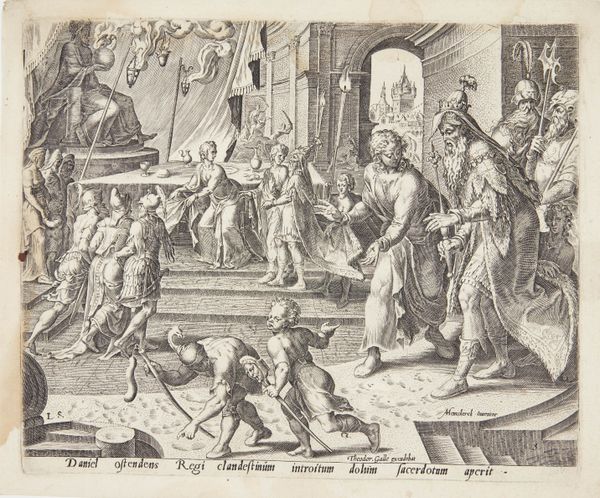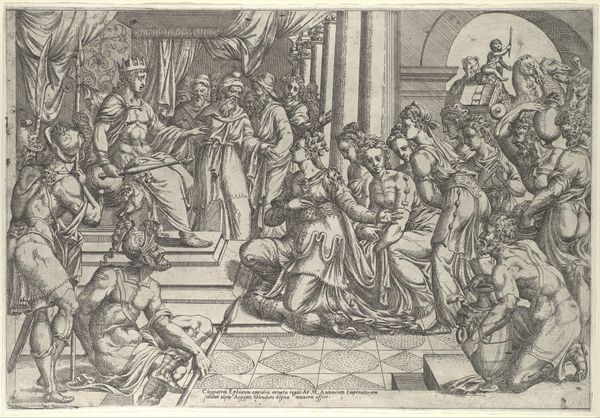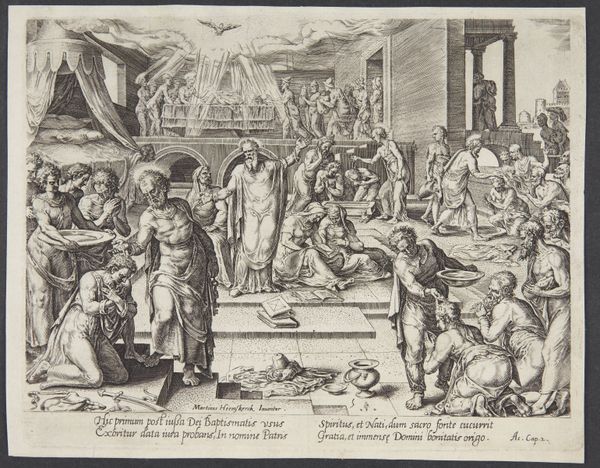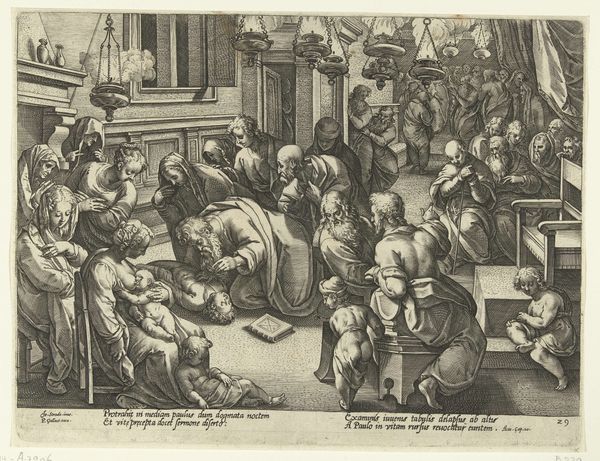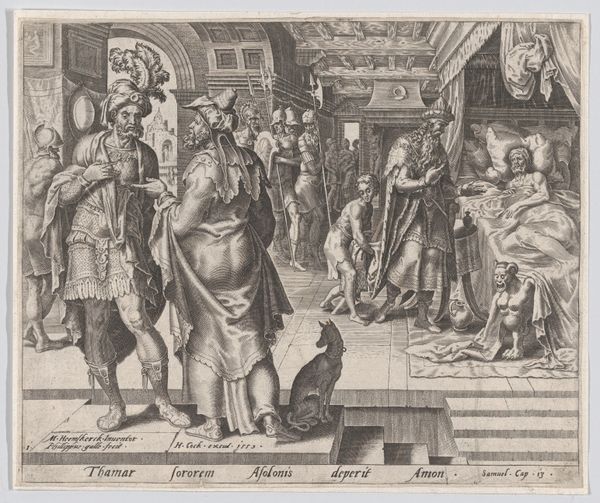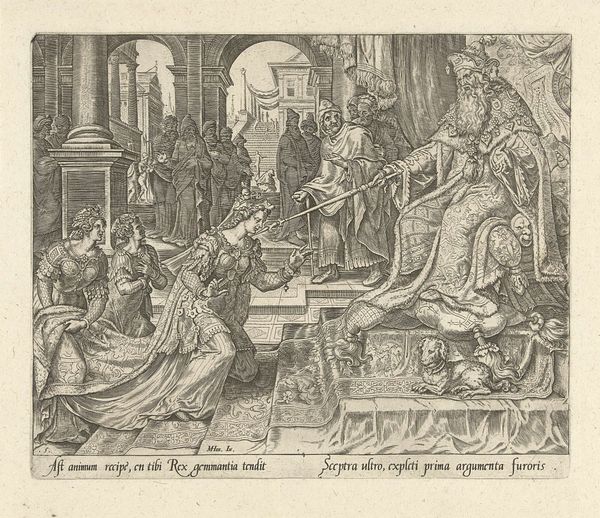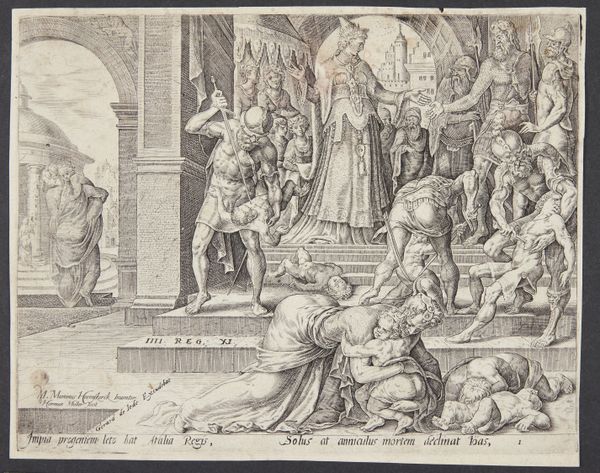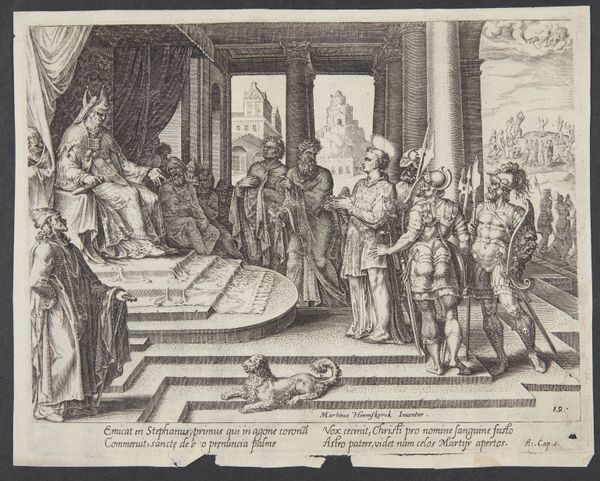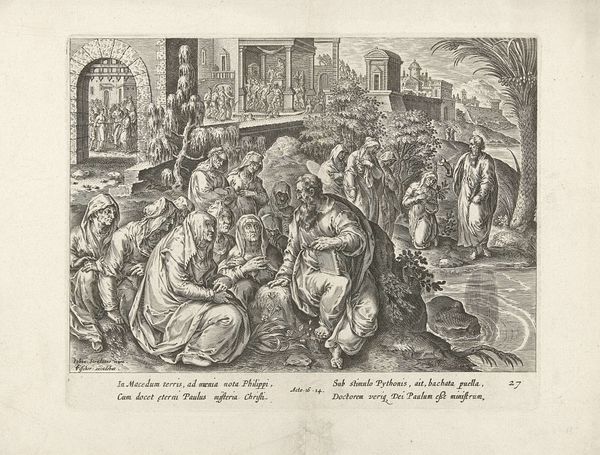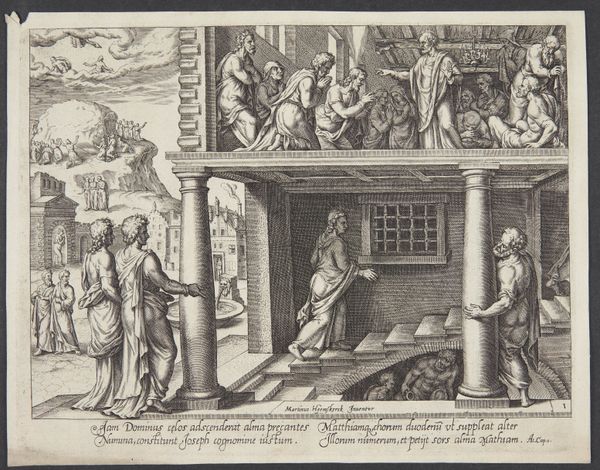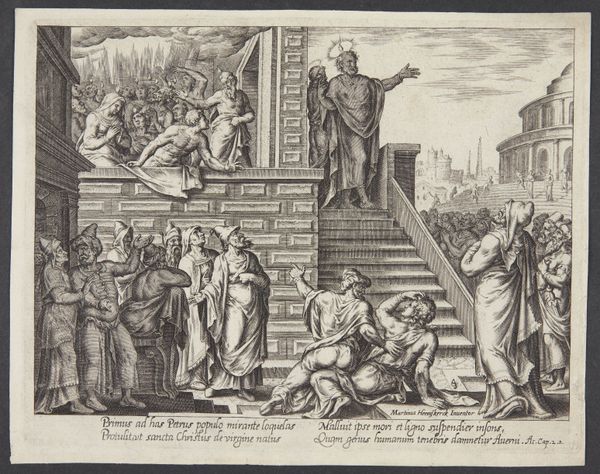
print, engraving
# print
#
figuration
#
history-painting
#
northern-renaissance
#
engraving
Dimensions: 213 mm (height) x 275 mm (width) (plademaal)
Editor: Philips Galle’s 1575 engraving, "The Angel Delivering the Apostles Out of Prison," has such a dramatic composition! There are so many figures and architectural details packed into a relatively small space. It definitely creates a sense of action and urgency. What social commentary might be present here? Curator: It’s essential to understand this piece within the context of the Northern Renaissance, a period marked by both religious fervor and social upheaval. Galle's work speaks to the socio-political dynamics of the time. This image reflects anxieties around religious authority, power, and resistance. How do you think the artist used the image of the angel to critique earthly power structures? Editor: The angel seems to be a symbol of divine intervention, a force liberating the oppressed apostles. Are you saying that the artist used the religious narrative to subtly question societal injustices? Curator: Precisely. By portraying the angel as a liberator, Galle implicitly critiques the institutions that unjustly imprison the apostles. Consider the inscription too – it underscores the triumph of divine will over human laws. What does the detailed architectural background tell us, and the fallen soldiers, in relation to the freed apostles? Editor: It’s almost as if the detailed architecture and defeated guards contrast with the humble apostles to show the disparity between earthly and divine authority, which, at the time, were extremely powerful. It’s a really complex message packed into one print. Curator: And that complexity encourages viewers to engage with these power dynamics. It prompts questions about justice, faith, and freedom. Editor: That makes me look at it with completely fresh eyes. It is not *just* a religious story but also one of political resistance. Thanks for highlighting these themes. Curator: Of course. Art offers different access points to question society and identity. We also should ask who could have afforded this print at that time, and their motives.
Comments
No comments
Be the first to comment and join the conversation on the ultimate creative platform.
